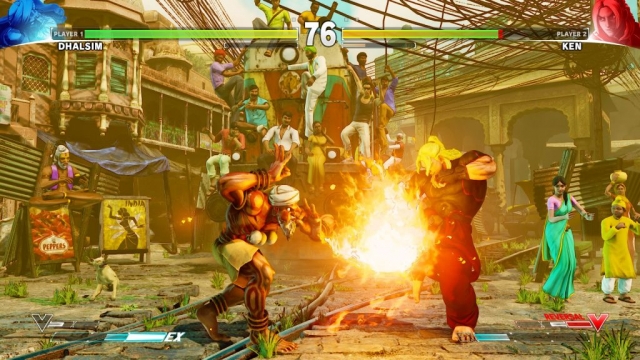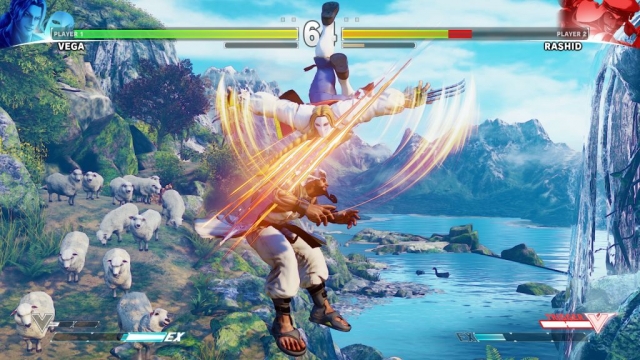Street Fighter V

I’m still in the learning phase of Street Fighter V. Since Monday, I’ve played maybe a hundred matches of it, in my living room, online, and at the GameWorks arcade in Seattle. Most of the experience was head-to-head, and much of it was against people who’d put in some serious time on one beta weekend or another. I have been getting destroyed regularly, and it doesn’t help that the character I started out wanting to learn, Laura, is also one of the hardest-to-use characters in the game.
It’s hard for me to make any real judgment calls about the game, because it’s got a steep learning curve and I haven’t even begun to scratch the surface. Any review about a fighting game has a built-in shelf life, as people continue to play it and learn more about its systems. The character that’s giving you problems now might be old news in three weeks; a character nobody plays now might be the only one anyone’s playing in the top 32 at Evolution this year. That’s the life cycle of the modern fighting game, and SFV is, if nothing else, modern.
Capcom’s rushed its release to some extent. The actual core of the game is solid, and while the servers have been getting hammered all week, the netcode is top-notch. I haven’t had an online match yet that didn’t feel like I was playing against somebody in the same room.
If you played any of the iterations of Street Fighter IV, you’ve got the basics of V down already. This is a faster and more fluid game, however, and the addition of the new V-Skill/V-Trigger systems can change things dramatically. By pushing the medium punch and kick buttons, a character might gain access to a strange projectile, new mobility options, a parry, a teleport, or what-have-you. Those, in turn, can fuel the V-Trigger gauge, which can be spent on counterattacks or burned all at once to activate a “super mode.” Each character’s is different, and its activation can be an offensive option by itself. I’ve barely played against half the cast at this point, and I’m still finding new things.
The problem with SFV, at this point, is that it’s a full-price retail release, but all you’re getting at this point in time is the game itself, with surprisingly few of the typical bells and whistles. There’s no arcade mode; the challenge levels from SF4 are promised free DLC for next month; the training mode is missing a few obvious quality-of-life adjustments, like being able to save your settings; there are few in-game tools to teach you about any characters besides Ryu, so you have to go outside the game to figure out what most characters’ V-Skills actually do; and the “story mode” is barely worth mentioning. Each character receives anywhere from three to five single-round fights, against an AI opponent that’s permanently set to brain-dead difficulty, which tell you little to nothing about any kind of story.
In point of fact, most of the cast are simply out in the world fighting for its own sake, chasing the adrenaline rush that comes with a truly challenging bout, with few other motivations. In a weird way, it serves as an excellent metaphor for the current state of SFV: it’s entirely about the fighting itself, and nothing else really surrounds it.
I don’t know if I’d buy Street Fighter V right now unless you plan on being a part of your area’s competitive scene. It’s not particularly casual-friendly and that’s mostly by design. Most of the game’s major features are anemic or absent, and you should expect to put in some real time in training mode and reading online guides before you’re anywhere near skilled enough to stand a chance online.
It’s a solid game, and I intend to put in enough practice that I can, one day, claim basic competence. That day is a long way off, however, and unless you’re looking for something that involves that kind of learning curve, I’d stay well away.
Reviewed By: Thomas Wilde
Publisher: Capcom
Rating: 70% (for now)
——————————————————————————–
This review is based on a digital copy of Street Fighter V for the PlayStation 4 provided by Capcom.
 Game Over Online
Game Over Online




















